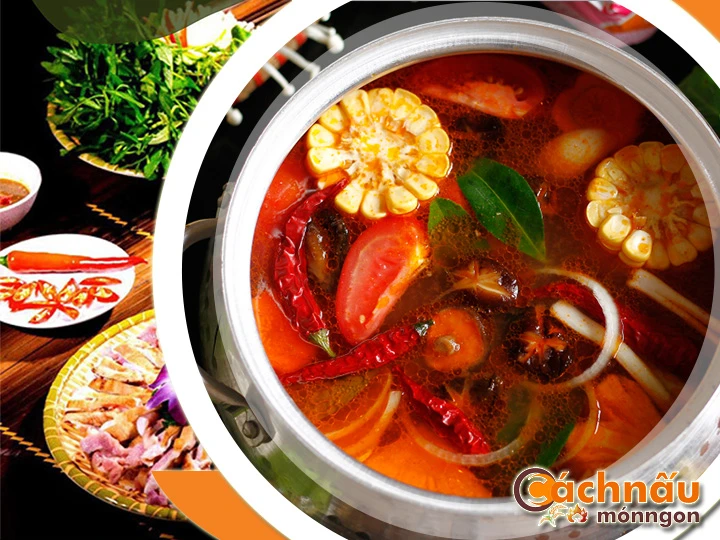Enjoy the Best Rabbit Hot Pot Techniques at Home - Lẩu thỏ
Enjoy the Best Rabbit Hot Pot Techniques at Home - Lẩu thỏ
Blog Article
Rabbit hot pot, a mouthwatering and heritage-inspired recipe, has been revered across diverse culinary traditions for centuries.
This comprehensive guide explores every part you need to realize about rabbit hot pot, from its ancient origins to contemporary twists, nutritional benefits, and cooking directions for creating the excellent dining option at home. Whether you are a professional cook or a curious beginner, this guide will motivate and prepare you to perfect the skill of rabbit hot pot.

EXPLORING THE PAST ALONG WITH WAY OF LIFE REGARDING HEARTY RABBIT MEAL.
Rabbit hot pot is a special and time-honored dish with significant traditions in diverse locales. Its admiration stems not only from its hearty flavor but also from its heritage and meaning.
1. Unveiling the Background about Rabbit Hot Pot.
- The History: Rabbit stew started in villages where rabbit meat were a abundant, valuable food source. In historical China, it was a traditional treat, particularly during celebrations.
- Spread Across Regions: In Western countries like Spain, rabbit was commonly found in broths, changing into modern versions of rabbit casserole as the dish found fans worldwide.
2. Rabbit Stew in Eastern Food Traditions.
- Across China: Known as Sichuan's rabbit hot pot delicacy, rabbit hot pot is celebrated in the culinary traditions of Sichuan, famous for its robust flavors and loved during festive occasions.
- Korea and Japan: While not as popular, rabbit hot pot is infrequently served as a medicinal dish in South Korea, or inspired by traditional nabemono dishes in Japanese cuisine, incorporating local seasonal crops and spices.
- Vietnam: Although rabbit hot pot is not a common daily dish, it is celebrated during unique moments or in farming regions where rabbit meat is abundant. It is often seasoned with distinctive spices such as lemongrass, ginger, and chili, paired with fresh vegetables like morning glory, mustard leaves, or sensitive plant. This dish is cherished for its one-of-a-kind flavor and dietary value, frequently shared at family and friend reunions.
Ở Việt Nam, tuy không thể xem là món ăn rộng rãi hằng ngày, nhưng rất quen thuộc trong những sự kiện quan trọng hoặc ở những miền quê, nơi nguồn thịt thỏ phong phú. Thường được tẩm ướp với các loại gia vị như sả, gừng, và vị cay nồng của ớt, kết hợp với cải bẹ xanh. Món ăn này nổi bật trong các bữa tiệc nhờ hương vị không trộn lẫn và giá trị dinh dưỡng cao, thường các buổi gặp gỡ bạn bè.
3. Traditional Rabbit Cuisine as part of Western Cuisine.
- France: Widely known as a warming meal with a red wine base, fresh rosemary and other herbs, and root vegetables. Rabbit hot pot is a culinary staple for special celebrations.
- Italy: The dish “Cacciatore”, featuring rabbit cooked with tomatoes and wine, is a foundation for hot pot recipes with rabbit.
MASTERING RABBIT HOT POT: RECIPES AND METHODS
Rabbit hot pot is a flexible dish that blends fresh ingredients, aromatic broths, and distinct techniques to create a filling and satisfying meal. Below are key steps into the primary methods and methods to master rabbit hot pot.
Basic Recipe for Rabbit Hot Pot
* Ingredients:
- 1 whole rabbit (sectioned)
- 4 cups of broth (vegetable)
- Vegetables (carrots)
- Spices and herbs (ginger)
- Seasonings (soy sauce)
- Optional: side dishes for serving
* Steps:
- Prepare the Rabbit: Wash and cut the rabbit into pieces. Marinate with a pinch of salt, pepper, and a drizzle of soy sauce for 30 minutes to boost the flavor.
- Prepare the Broth: Heat a pot with a small amount of oil. Fry garlic and sliced ginger until golden. Add your choice of broth and bring it to a boil.
- Add the Rabbit: Add the rabbit pieces into the pot and let them simmer on gentle heat for around half an hour until cooked through.
- Incorporate Vegetables: Add your chosen vegetables and cook until they are perfectly cooked but still bright.
- Plate Up: Transfer the hot pot to a portable stove. Serve with dipping sauces and add-ons such as rice or noodles.
Key Techniques for Cooking Rabbit Hot Pot
- Seasoning:
. Marinate the rabbit with a combination of salt, pepper, and aromatics to intensify its original taste.
. For more complexity, use wine, soy sauce, or a mix of fresh herbs like rosemary and thyme.
- Layering Ingredients:
. Start by simmering the rabbit in the broth to draw out its rich flavor.
. Introduce vegetables step by step based on their texture needs.
- Optimal Cooking Duration:
. Avoid letting it dry out the rabbit, as it can become tough.
. Test for completion by checking if the meat falls off the bone.
- Taste Customization:
. Fine-tune the broth by adding additional seasonings as needed.
. Experiment with different flavor profiles, such as spicy Sichuan-style variations.
Pro Tips for Rabbit Hot Pot
- Fresh Ingredients: Always choose fresh rabbit meat and farm-fresh produce for the best results.
- Taste and Adjust: Be attentive of the saltiness in the broth. Sample and refine frequently during cooking.
- Sauce Pairings: Offer a variety of sauces like spicy garlic dip or soy-based dips to elevate the dining experience.
- Visual Appeal: Use a communal pot or serve the hot pot as a focal point to promote sharing.
With mastery nấu lẩu thỏ of these recipes and techniques, you can prepare a rabbit hot pot that’s both flavorful and visually appealing, turning it into a star attraction for any meal or gathering. Report this page